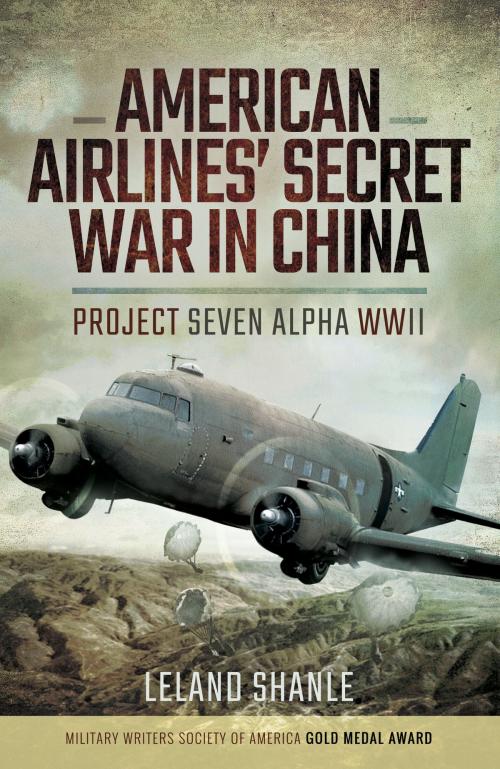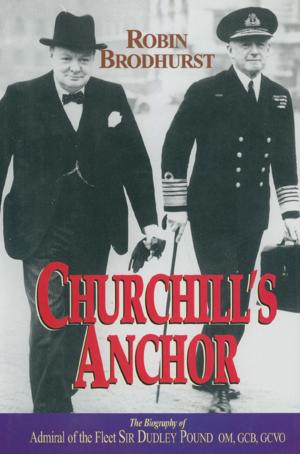American Airline's Secret War in China
Project Seven Alpha, WWII
Fiction & Literature, Military, Historical, Mystery & Suspense, Thrillers| Author: | Leland Shanle | ISBN: | 9781526711069 |
| Publisher: | Pen and Sword | Publication: | October 31, 2016 |
| Imprint: | Pen and Sword Aviation | Language: | English |
| Author: | Leland Shanle |
| ISBN: | 9781526711069 |
| Publisher: | Pen and Sword |
| Publication: | October 31, 2016 |
| Imprint: | Pen and Sword Aviation |
| Language: | English |
In late 1941, President Roosevelt agonized over the rapid advances of the Japanese forces in Asia; they seemed unstoppable. He foresaw their intentions of taking India and linking up with the two other Axis Powers, Germany and Italy, in an attempt to conquer the Eastern Hemisphere. US naval forces had been surprised and diminished in Pearl Harbor and the army was not only outnumbered but also ill-prepared to take on the invading hoards. One of Roosevelt's few options was to form a defensive line on the eastern side of the Patkai and Himalayan Ranges; there, he could look for support from the Chinese and Burmese. It was the only defense to a Japanese invasion of India.
To support and supply the troops who were fighting in hostile jungle terrain, where overland routes had been cut off, he desperately needed to set up an air supply from Eastern India. His problem was lack of aircraft and experienced pilots to fly the dangerous Hump, over the worlds highest mountains. Hence the inception of Operation Seven Alpha, a plan to enlist the aircraft - DC-3s - and the pilots - veterans of World War One - of American Airlines. This newly formed elite Squadron would fly the medium-range aircraft in a series of long-distance hops across the Pacific and Southern Asia to the Assam Valley in India. They would then create and operate the vital supply route, carrying arms, ammunition and food Eastward to the Allied bases, before returning with wounded personnel. This is the story of that little-known operation, carried out in the early days of the Burma Campaign.
The book is based on firsthand experiences of those who were involved, and it serves as a fitting tribute to the bravery and inventiveness of a band of men who answered their country's desperate call at the outset of the war against Japan in Asia.
In late 1941, President Roosevelt agonized over the rapid advances of the Japanese forces in Asia; they seemed unstoppable. He foresaw their intentions of taking India and linking up with the two other Axis Powers, Germany and Italy, in an attempt to conquer the Eastern Hemisphere. US naval forces had been surprised and diminished in Pearl Harbor and the army was not only outnumbered but also ill-prepared to take on the invading hoards. One of Roosevelt's few options was to form a defensive line on the eastern side of the Patkai and Himalayan Ranges; there, he could look for support from the Chinese and Burmese. It was the only defense to a Japanese invasion of India.
To support and supply the troops who were fighting in hostile jungle terrain, where overland routes had been cut off, he desperately needed to set up an air supply from Eastern India. His problem was lack of aircraft and experienced pilots to fly the dangerous Hump, over the worlds highest mountains. Hence the inception of Operation Seven Alpha, a plan to enlist the aircraft - DC-3s - and the pilots - veterans of World War One - of American Airlines. This newly formed elite Squadron would fly the medium-range aircraft in a series of long-distance hops across the Pacific and Southern Asia to the Assam Valley in India. They would then create and operate the vital supply route, carrying arms, ammunition and food Eastward to the Allied bases, before returning with wounded personnel. This is the story of that little-known operation, carried out in the early days of the Burma Campaign.
The book is based on firsthand experiences of those who were involved, and it serves as a fitting tribute to the bravery and inventiveness of a band of men who answered their country's desperate call at the outset of the war against Japan in Asia.















